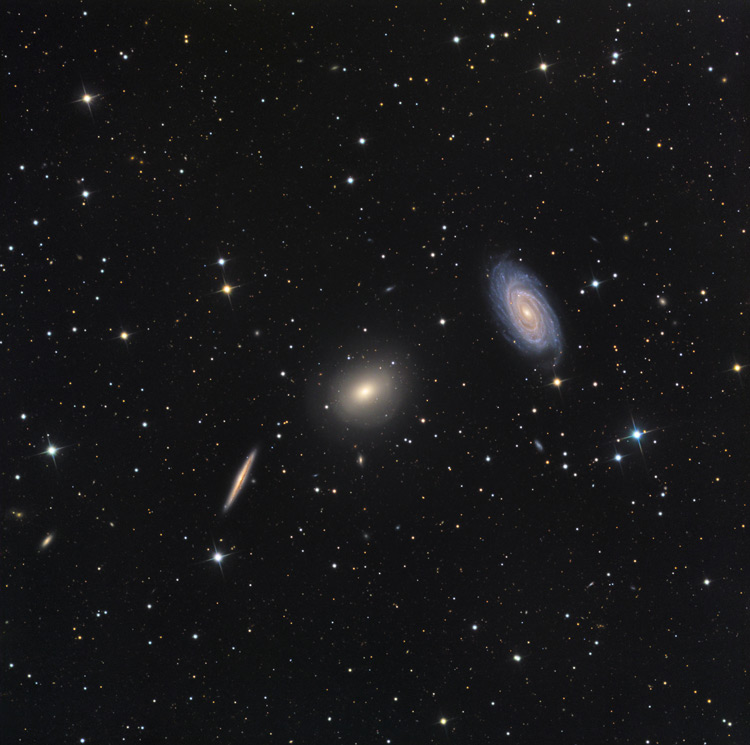|
This fascinating trio of galaxies is wellknown as the Draco Group, evidently located in the northern constellation of Draco.
From bottom left to up right are edge-on spiral NGC 5981, elliptical galaxy NGC 5982, and face-on spiral NGC 5985.
These galaxies are situated in a distance of approx. 100 million light-years.
The bright core of the prominent face-on spiral NGC 5985 is classified as an active Seyfert galaxy.
2001 a interesting study done by Halton Arp and David Russell reports: “The distribution on the sky of clusters of galaxies shows significant association with relatively nearby, large, active galaxies. The pattern is that of clusters paired equidistant across a central galaxy with the apparent magnitudes and redshifts of their constituent galaxies being closely matched. The clusters and the galaxies in them tend to be strong X-ray and radio emitters, and their redshifts occur at preferred redshift values. The central, low-redshift galaxies often show evidence of ejection in the direction of these higher redshift clusters. In all these respects the clusters resemble closely quasars which have been increasingly shown for the last 34 years to be similarly associated with active parent galaxies. New, especially significant pairings of quasars are presented here, which are, at the same time, associated with Abell clusters of galaxies. It is argued here that, empirically, the quasars are ejected from active galaxies. They evolve to lower redshift with time, forming stars, and fragmenting at the end of their development into clusters of low-luminosity galaxies. The cluster galaxies can be at the same distance as their lower redshift parents because they still retain a component of their earlier, quasar intrinsic redshift.”
The contrast in visual appearance and close apparent separation makes this triplet an attractive subject for astrophotographers.
Many faint background galaxies can be found in this wide field measuring 30 arc min in both axes.
North is down.
Find a closer view on the galaxy group in 30/50/80% size below.
|
